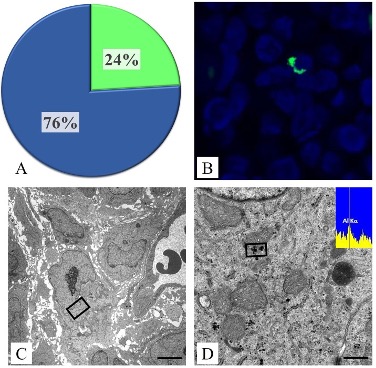Research Programme: Environmental Pollution: Decoding the Complex Relationship with Human Cancer
Principal Investigator: Prof. Manuel Scimeca

Scientific Interest
Cancer remains a significant global health challenge, impacting millions of lives annually. Although genetic predisposition and lifestyle factors are notable contributors to cancer development, increasing evidence indicates that environmental pollution plays a crucial role in this disease burden. Addressing the escalating rates of cancer requires acknowledging the adverse effects of environmental pollution and implementing coordinated efforts to minimize its impact on human health.
Current Research
By Transmission electron microscopy and histological analysis the accumulation of aluminum (Al) in both human colon and breast cancer samples has been detected. The presence of Al in these cancers has been linked to biological processes that drive cancer progression, such as epithelial-mesenchymal transition (EMT) and apoptosis. Specifically, specimens positive for Al demonstrated heightened expression of EMT biomarkers (vimentin and nuclear β-catenin) and in colon lesions displayed resistance to apoptosis. Substantiating the connection between Al accumulation, EMT, and apoptosis, a comprehensive multi-omics investigation, including Next-Generation Sequencing (NGS) and RNA-seq on two selected patients, was conducted.
Notably, the tumour mutational burden (TMB) of Al-positive cancers was unexpectedly higher than that of a control cohort, suggesting a potential influence of Al on genomic instability. Consistent with the TMB and histopathological data, Al-positive cancers exhibited mutations in key regulatory genes such as GATA3 and TP53.
Relevance to cancer biology
Bioaccumulation of pollutants, including toxic metals, in the human body over time can lead to chronic exposure, triggering a cascade of events that ultimately contribute to the development and progression of cancers. The mechanisms of toxicity for each pollutants vary, but they often involve oxidative stress, DNA damage, inhibition of crucial enzymes, disruption of cellular signaling pathways, and interference with essential biological processes.

From: https://doi.org/10.1016/j.scitotenv.2023.167667
